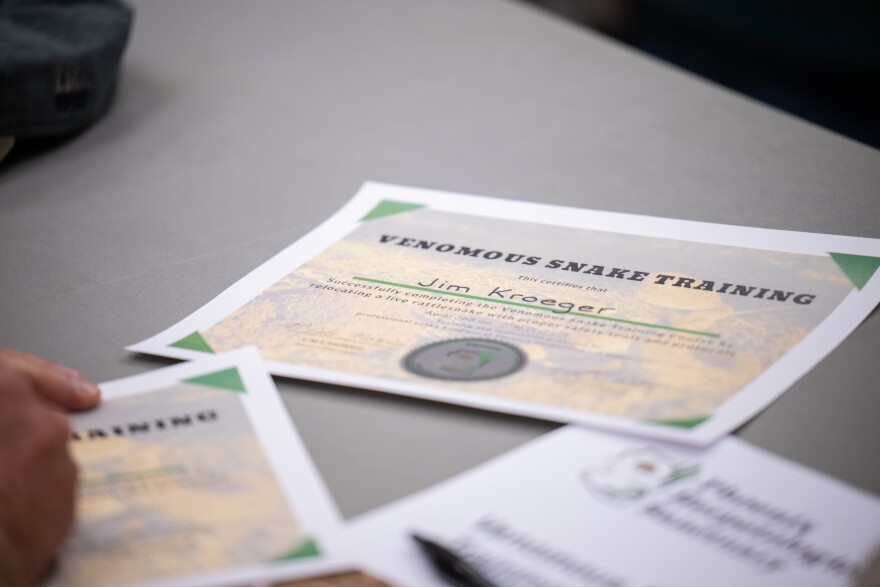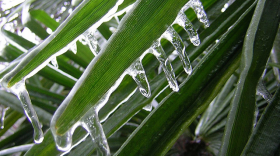SCOTTSDALE, Ariz. — In a Phoenix-area venomous snake training course, the first thing students learn is that basically everything they thought they knew about rattlesnakes is a myth.
For starters, rattlesnakes aren't aggressive. They don't rattle to warn that they're about to strike. And they definitely don't chase people.
"They're not out to get us," Cale Morris of the Phoenix Herpetological Sanctuary told the class Tuesday.
The sanctuary holds the class for the public and businesses in the spring, as rattlesnakes wake up from their winter-long naps, known in the reptile kingdom as brumation.

The trainings run through a host of rattlesnake information before teaching people how to safely grab snakes with tongs, plop them in a bucket and remove them from their homes. The students also get hands-on experience doing it.
And that practice could prove to be quite helpful. Arizona saw a surge in rattlesnake bites in April, according to data provided to NPR on Wednesday by the Banner Poison and Drug Information Center.

For the love of snakes
Morris has been studying rattlesnakes for decades and has captured thousands of them. He's never been bitten, a tidbit he reiterates to his class.
"The biggest question I get is have I ever been bitten. Yeah, I've been bitten by dogs, cats, neighborhood kids," he quips.
He caught his first snake at the age of 5 with some help from his dad. And his desire to learn more about them has led to myth-debunking research.
In one study published in the journal Biology of the Rattlesnakes, Morris rigged up a fake leg to test what happens when humans step on a rattlesnake. The results? Most of them either slithered away, froze or wriggled in place. Of the 175 stepped-on snakes, only six struck the leg's boot and just three of them went into a coil position.
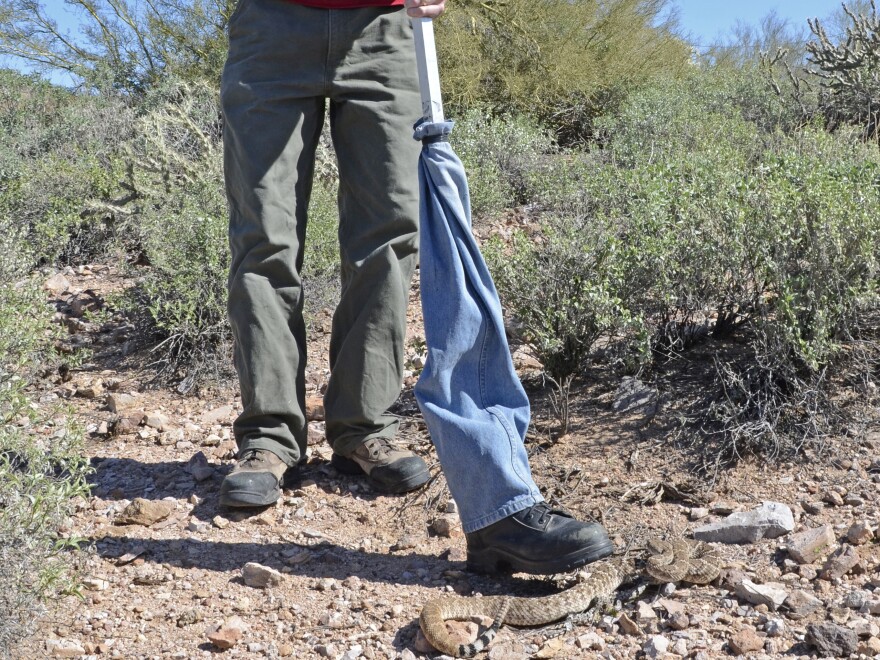
Morris still regularly conducts research to better understand their behavior.
There are a lot of things people don't know about rattlesnakes, he said. For one, they have many predators, including bobcats and hawks, who can tear them apart.
"They're on the menu for everything," said Morris. "They're fat, they have a lot of meat on them."
They may be fat, but they're not that long, averaging only about 3 feet in length and a pound in weight. (The biggest Morris has ever found was just over 4 feet). They're also pretty slow, and they slither in a straight line in an action Morris gleefully called caterpillaring.

They don't rattle before striking, since it would give their position away. Then why do they rattle? It's a trait that may have evolved to keep hooved animals from stepping on them, Morris said.
And no, baby rattlesnakes aren't more dangerous than adults. A baby rattlesnake's venom is just a tiny fraction of that produced by an adult.
"It's such a silly thing when you compare it to other animals. Like, 'Watch out! It's a puppy!" Morris said.
Classssss is in session
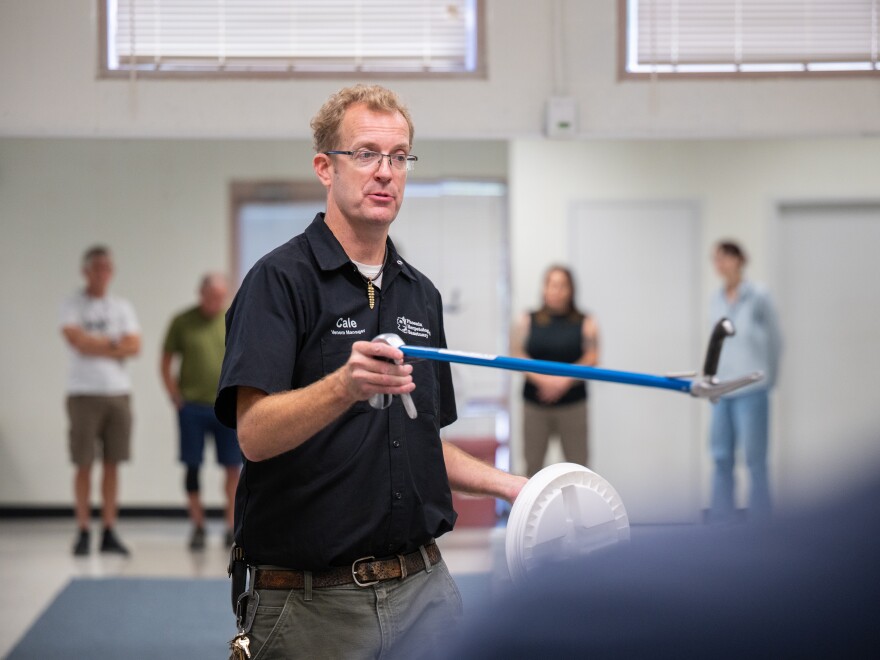
"Remember, this is the fun part," Morris told the class as he prepared to release the snake from its white bucket for the hands-on portion of the class.
First, students plucked up a wily — but nonvenomous — gopher snake.
In Tuesday's class, the snake played the role of comic relief. It balled itself in knots, slithered through the tongs and, a couple of times, popped its head over the bucket and peered at the crowd.
"It's so cute!" one student squealed as another tried to negotiate his tongs around the reptile's midsection.
All the students were successful, although the snake wriggled free from the tongs a few times and fell to the floor with a thud. Morris later reassured the students that the snake wasn't hurt.

Then they moved on to the rattlesnake. She was a wild snake, recently caught. Her tub was marked with an ominous sticker that reads, "DANGER: VENOMOUS REPTILES." And she heralded her arrival with a vigorous rattle.
"I just want you to look at this for what it is. This is not an aggressive animal. I see a shy, scared animal," Morris said as the snake kept watch of him.
And it was true. While noisier, the rattlesnake portion of the training was far calmer and quicker. The snake moved less, and most in the class were able to slip it into the bucket in one smooth motion.
Who goes to rattlesnake class?
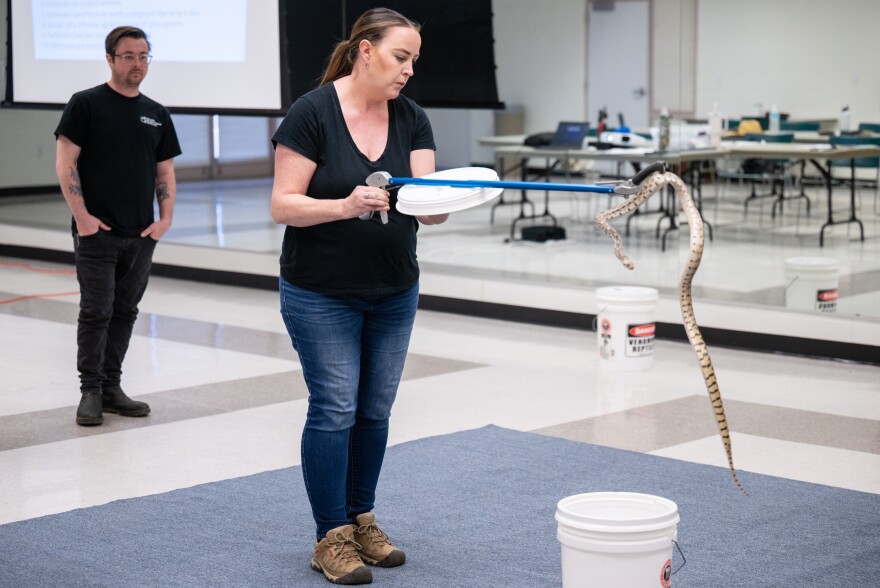
People attend the classes for all sorts of reasons. Many of them are homeowners who want to be able to safely move snakes themselves. That was the case for Kirsten Reyes of Tucson, who drove two hours to get there.
She said an exterminator found rattlesnakes in her yard and immediately killed them.
"And you know, that kind of angered me a little bit, so I figured I'd take it into my own hands and be prepared if that ever happens again," she said.
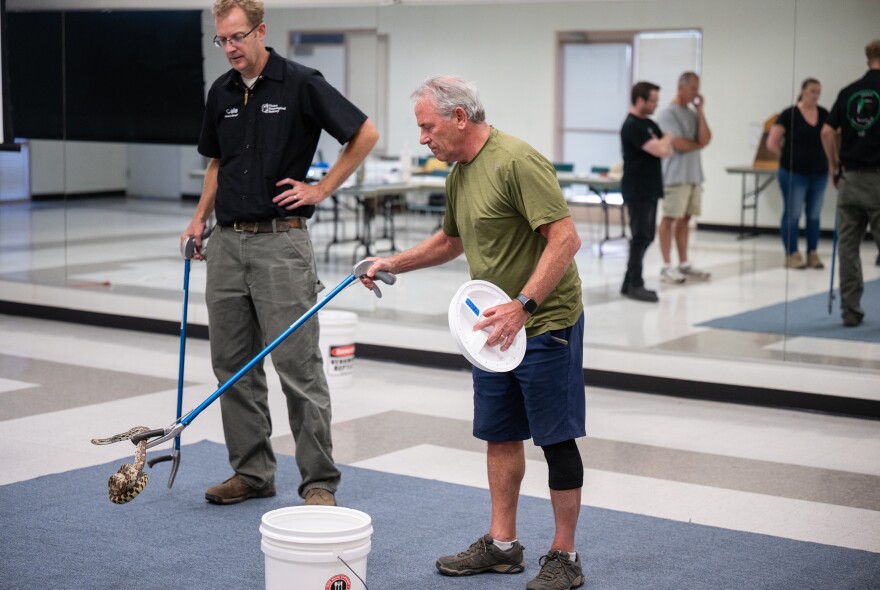
Dave Wilson volunteers at several desert area preserves and has seen a couple dozen snakes this year alone. He had even caught one before.
"I had a big bucket and a yard tool, and scooped him into it after about five minutes. It rattled the whole way," he said. He said he came to class to learn how to do it the right way.
Kelley Fox is the urban wildlife planner for Arizona's Pinal County, and has been studying reptiles for years. Even she learned new rattlesnake facts in the class. Among them: the idea that rattlesnakes are losing their rattles because of human interaction is a myth.
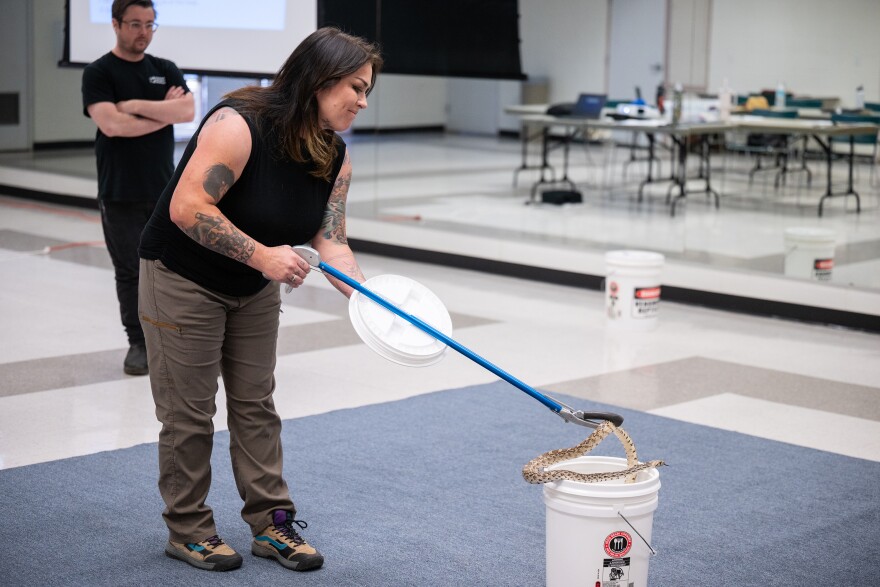
"Misinformation is almost always the demise of things and unfortunately that's the case for reptile individuals in the wild," she said. She's eager to bring her newfound knowledge back to the public.
"We come across patrons who ask us a lot of questions. Most of the questions they ask us are related to these myths," she said.
One woman even attended a previous class in a bid to cure her fear of snakes. It didn't really work, said Morris.
There are also classes for businesses, like construction operations, that encounter the snakes out in the desert.
"They like employees to be able to remove them if they see them while they're building," Morris explained.
When the snake bites

Rattlesnakes may be timid, but snake bites do happen. And this spring in Arizona, they happened a lot.
The number of bites jumped from six in March to 29 in April, according to data from the Banner Poison and Drug Information Center and Tucson Poison Center. So far in May, there have already been 13 bites. Over the past five years, the state has seen an average of about 244 bites a year.
While painful, it's rare for someone to die from a rattlesnake bite. Less than 1% of bites are deadly, according to Banner. Up to a quarter of rattlesnake bites are considered dry bites, where no venom is injected.
If bitten, you should get yourself to the hospital as quickly as possible. Don't apply ice, and definitely don't try to suck out the venom.
You also don't need to know the species, since the antivenom that has been around for decades works on all rattlesnake venoms.
The best thing to do if you see a rattlesnake is to give it lots of space, appreciate it and be on your way.
Copyright 2024 NPR
